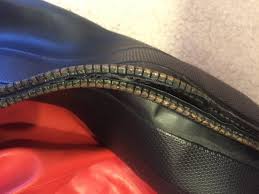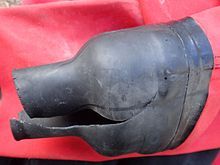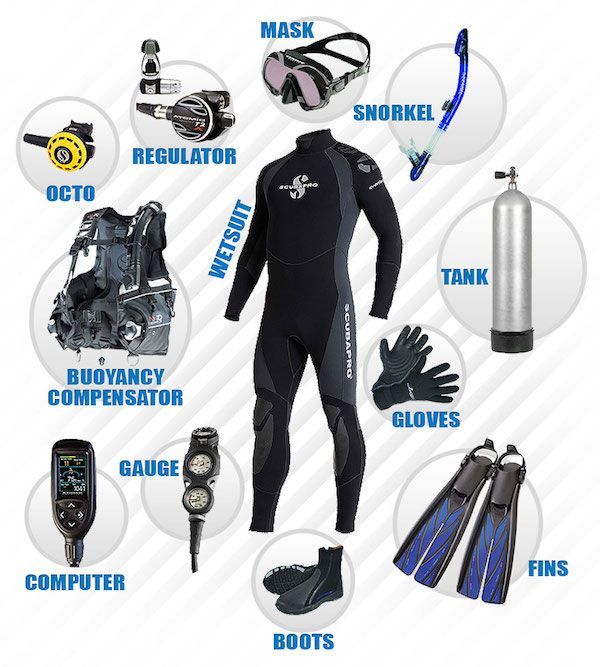CYLINDERS
Cylinders are fairly easy to check, simply locate the test sticker on the cylinder and ensure you are still within your test period. If your cylinder doesn’t have a sticker on it then you need to locate the manufacture date or the most recent test stamp on the cylinder and ensure you are still within 2 and a half years of the most recent date. So if your last stamp was 09/2017 for example then your cylinder would need testing again end of March 2020.

Ensure your cylinders have air in them. If they were stored away for the winter month’s empty and the valves open it would be a good idea to get them inspected even if they are still in date to ensure no internal corrosion has occurred while they have been sat doing nothing. If they’ve been sat around for the whole of winter with air in them then before you go diving it’s a good idea to drain them down to 10 bar or so and get them refilled with fresh air ready for your first plunge
REGULATORS
Take this opportunity to get your regulators serviced or inspected. Most manufacturers recommend if you’re doing less than 100 dives a year to get your regulators inspected after a year and fully serviced every 2 years. During the inspection the technician will basically give your regs a health check and ensure everything is doing what it should be. This includes checking the pressure from the first stage, the 2nd stage cracking effort, general condition of hoses, mouthpieces, filters and vacuum seal on 2nd stage. If the regulator fails any of these tests you will be recommended to either fully service the regulators or simply replace the necessary parts. Basically look after your regulators and they will look after you.
BCD’S/WINGS
Start by fully inflating your BCD/wing and leave it inflated for about 4 or 5 hours. It should hold its pressure and feel the same as it did when you first inflated it. If it deflates over this period of time take it to your local technician to inspect it and see if the problem is repairable. If your BCD/Wing is holding pressure check the dump valves are operating correctly and ensure the inflator is inflating and deflating correctly with no signs of leaks. If your regulators are due their service then don’t forget to get your BCD/Wing serviced at the same time too.
DRYSUITS
Take your time with your drysuit and make sure you give it a good inspection before you get it wet. We’ve all had a cold wet dive and probably don’t want to repeat it, so taking a few minutes now to inspect your suit could potentially save you from experiencing this again.
- Zip – Start by opening the zip and having a close inspection of the teeth. They should all line up and be in a solid straight line. If any of the teeth are damaged in any way they could cause your zip to leak or cause your zip to jam when trying to open or close the zip. If your happy with the condition of the zip then give it a good rub down with Bees Wax or some sort of zip lubricant to ensure it runs smoothly on your first dive


- Seals – Check your wrist and neck seals. The latex seals should feel soft and flexible to the touch and show no signs of tears, thinning, stiffness, stickiness or holes. If they show any sign of damage get them replaced before your first dive. If your suit has neoprene seals check the stitching down the seams to ensure there is no signs of separation and inspect the smooth sealing surface for any tears or damage from finger nails etc. If there is any damage to the smooth surface then you can simply repair them with black witch or if it’s a major tear then get them replaced.
- Boots and Socks – If your suit has rubber boots attached, have a close look over them for signs of damage. Inspect for signs of holes and cracks in the rubber all over and ensure they are still in good working order. If your suit has neoprene socks fitted inspect all the seams and ensure there is no sign of separation or damage and inspect the sole for signs of thinning or holes. If your boots or socks are looking worn or damaged get them replaced before you get the suit wet.
- Seams and Tape – Check over the whole suit inspecting the seams. If the seams are glued and stitched then there should be no signs of damage to the stitching or any signs of separation on the seams. If your seams are glued and taped then look for any signs of the tape coming loose. If you see any signs of damage again get it repaired before your first dive
If your suit has been stored away for the winter months the easiest way to check it’s still water tight is to get it pressure tested. This way you will know for sure the suit is good and will give you the best chance of having a warm dry dive.
If your suit is starting to whiff a bit too, it’s probably not a bad idea to give it a rinse out with warm soapy water or one of the commercially available wetsuit shampoo’s and hang it upside down by its boots to dry out properly (your dive buddies will really appreciate this)
HOODS AND GLOVES
Give your neoprene hoods and gloves a good soak in warm soapy water or wetsuit shampoo to make sure you get all of last year’s salt out of them ready to go for the new season. Rinse them off in fresh water and allow them to dry out overnight. If their starting to look old and thin in places then maybe it’s time to invest in a new set to ensure you’re as warm as possible on your first dive
DSMB AND REELS
Provided your DSMB is a sealed style you can inflate it and leave it for a few hours to ensure it is still holding air. If your sausage is no longer air tight then it’s time for an upgrade. With your reels, it’s a good idea to take this opportunity to pull off all the line and re-wind them to ensure the line runs smoothly the first time you use it.
Now your gears ready to go we strongly recommend you take your first plunge in a pool or shallow quarry to make sure your skills are up to speed then enjoy the season.
















